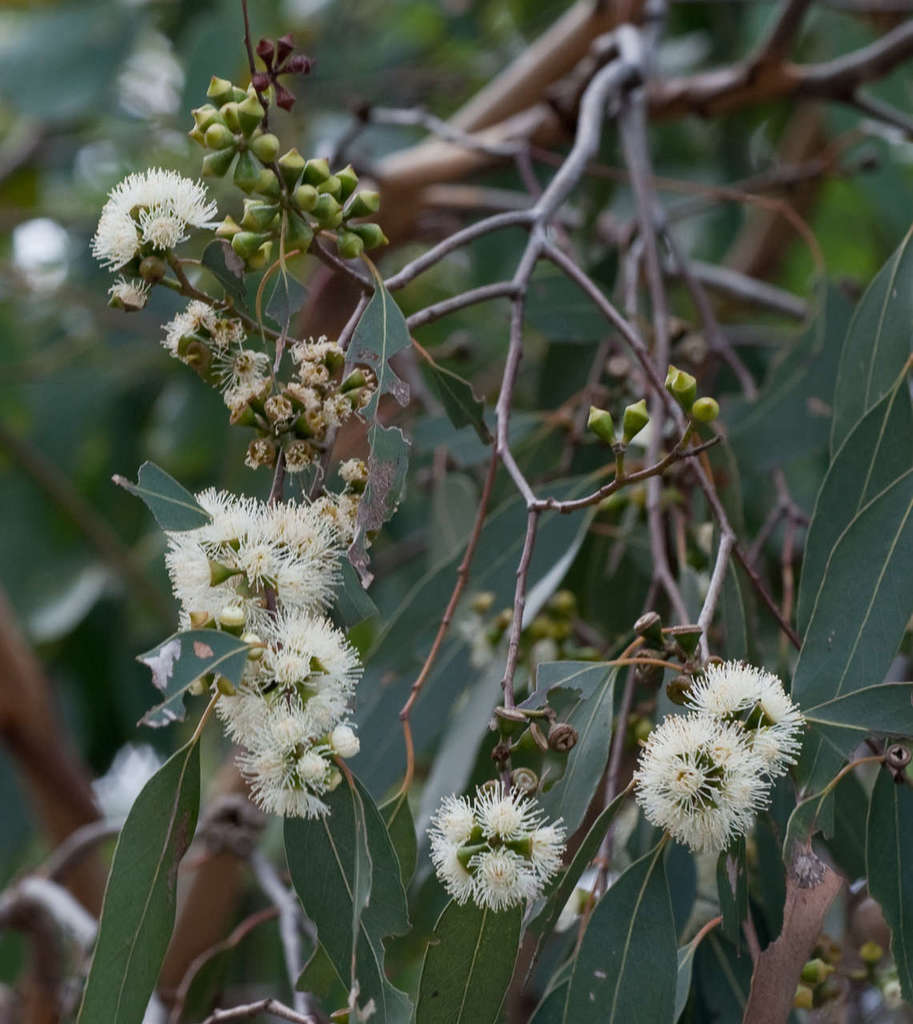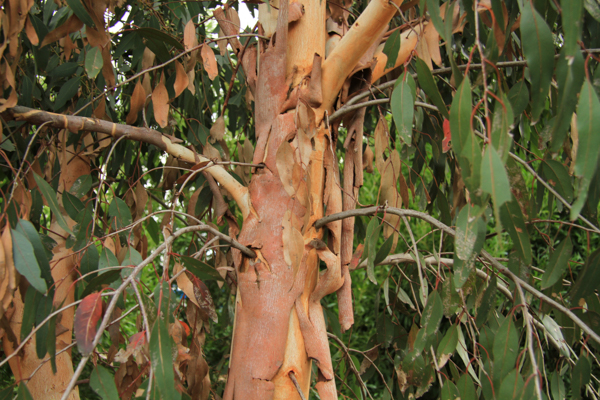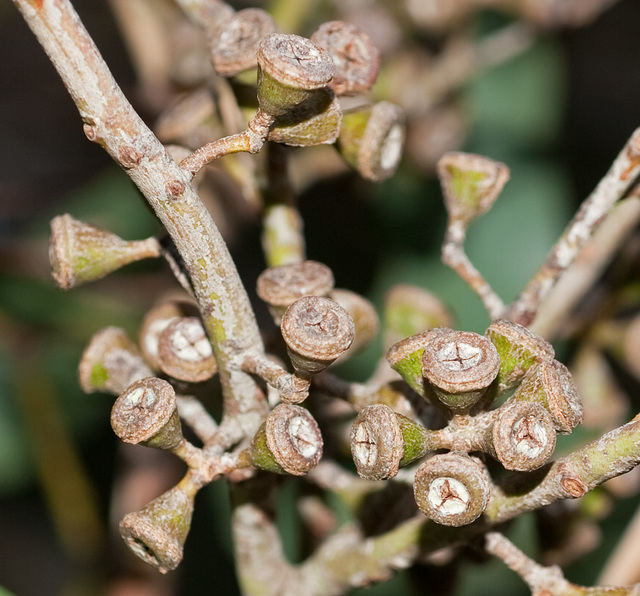Fruits/Seeds
Usually cone-shaped with a flat top.
Field Guide
Improve your identification skills. Download your Swamp Gum field guide here!
Lowland Leadbeater’s Possum and Helmeted Honeyeater feed on the flowers of this species, which flowers at a different time from the Mountain Swamp Gum. This overlap of flowering time provides food across an extended period for these creatures.
Small to medium tree, 20 m tall. Bark is variable, dark and rough at the butt; upper trunk and branches peel in ribbons.
Juvenile leaves are short-stalked, almost circular. Adult leaves are thick, glossy, dark green, ovate shaped, usually has a wavy edge.
White cluster of 3 - 10 (often 7).
Usually cone-shaped with a flat top.
Improve your identification skills. Download your Swamp Gum field guide here!

First fully open single flower
Full flowering (record all days)
End of flowering (when 95% of the flowers have faded)
No flowering
Fruiting


E. camphora is smaller with smaller fruit and a less upright form.
E. strzleckii and E. bunyip are distinguished by glandular (secretory structure on the surface, smooth, shiny, bead-like outgrowth) leaves, discolourous (leaf sides are different colours) juvenile leaves, and glaucous (blue-green colour) new growth of adult leaves.
E. brookeriana is distinguished by the glossy green, minutely scalloped (repeated convex curved pattern), glandular, discolourous juvenile leaves.